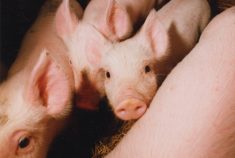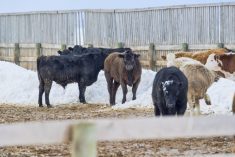Officials with the Canadian Food Inspection Agency are confident that the cases of avian influenza they’ve responded to in Ontario and British Columbia are the result of contact with wild birds, not farm-to-farm transmission.
“From the seasonality of this disease and the characterization of the virus — we cannot be 100 per cent sure that it is wild birds — but there is a very strong correlation,” said Abad Harchaoui, a senior animal health veterinarian with the agency.
“From our experience with this virus, from incursions we had in B.C. and several states in the U.S. and later here in Ontario, we found that this virus happens during the migration of wild birds,” he said.
Read Also

Mazergroup’s Bob Mazer dies
Mazergroup’s Bob Mazer, who helped grow his family’s company into a string of farm equipment dealerships and the main dealer for New Holland machinery in Saskatchewan and Manitoba, died July 6 from cancer.
Not only does it happen during the migration of wild birds, outbreaks of avian influenza occur first along the flight paths of migrating birds, Harchaoui said. Cases found on the West Coast in January and February this year were followed by infections southward along a route known as the Pacific flyway. A reverse pattern of infection then began occurring as birds headed north again beginning in March, he said.
Mississippi saw bird flu hit its commercial poultry industry as wild birds followed that state’s namesake river northward in late winter and early spring. Arkansas was hit next, followed by Missouri, Minnesota and Ontario.
Manitoba has not had any cases of the disease, but U.S. counties bordering the province have seen high rates on infection.
Reports coming out of the United States now put the number of affected birds at 26 million, with flocks hit in 14 different states.
Unlike the Canadian situation, farm-to-farm transmission has been occurring south of the border, with some barns in such close proximity that airborne transmission is suspected.
Officials with Manitoba Agriculture, Food and Rural Development have said that airborne transmission isn’t a concern in this province, where poultry barn density is low.
Harchaoui noted that the inspection agency has worked with the poultry industry over a period of years to develop and implement protocols for both everyday areas of concern and periods of heightened disease risk.
“Generally, the industry is doing all it can to protect its birds from disease, not only from avian influenza, but all disease,” he said.
When cases of avian influenza are identified, CFIA moves quickly to contain the risk.
“Once we have the confirmation from one of our network labs… CFIA will then send a team and put the farm under quarantine,” said Harchaoui. “This way we are protecting other farms from the spread of the disease… we control everything that is going in or out of this farm, and after we go through this phase we can plan for quick and safe destruction of the birds on the premises.”
While there have been no new cases of bird flu in Canada since a third infected farm was quarantined in Ontario — and it appears the number of new cases in the U.S. is now decreasing — Harchaoui said it’s still too early to know if the apex has passed.
“We cannot speculate, especially with the timing of the migration,” he said. “So I cannot say it’s over. We have to wait a little bit until we are confident that the wild birds have moved north and away from places where we have poultry.”



















